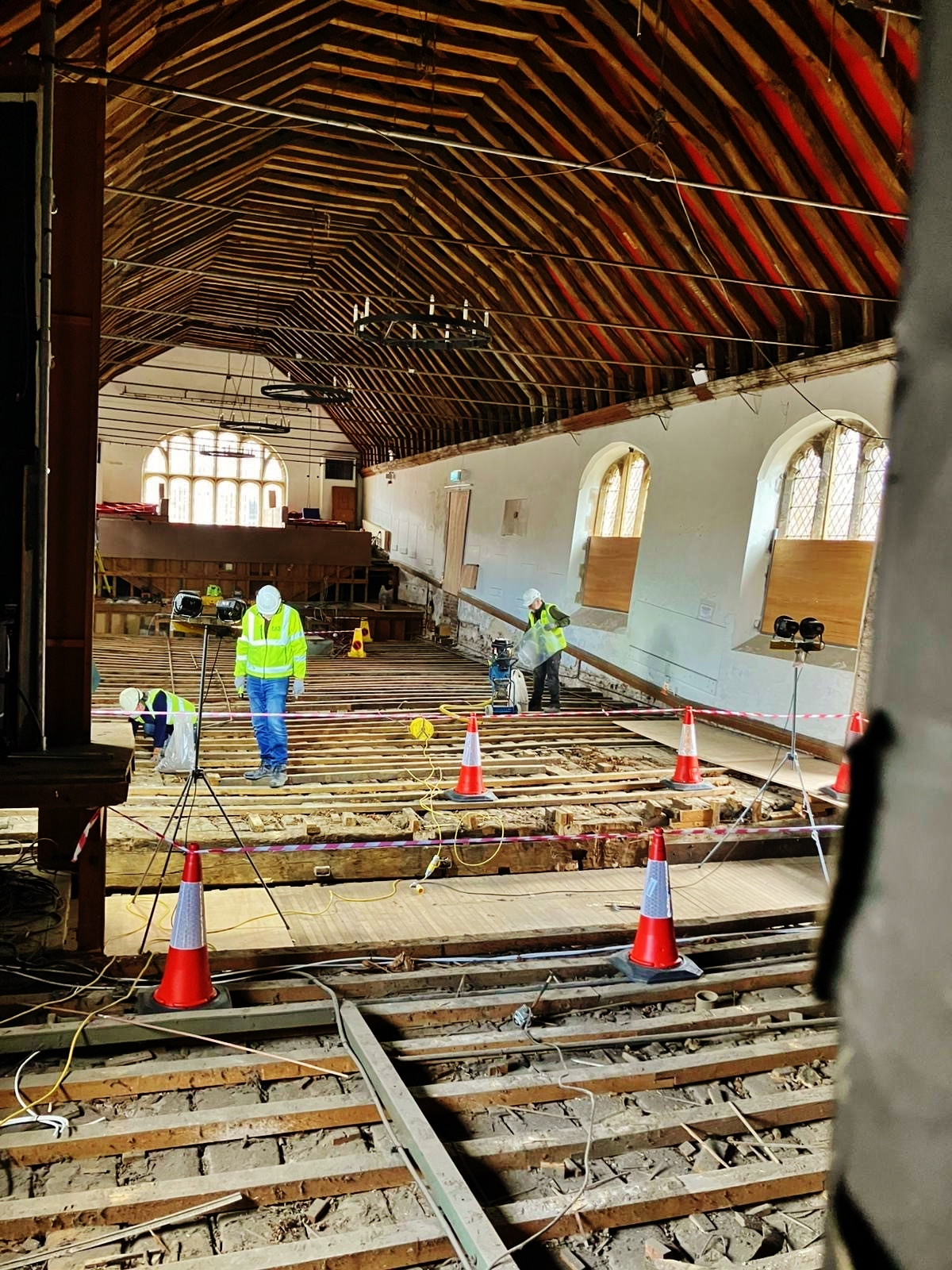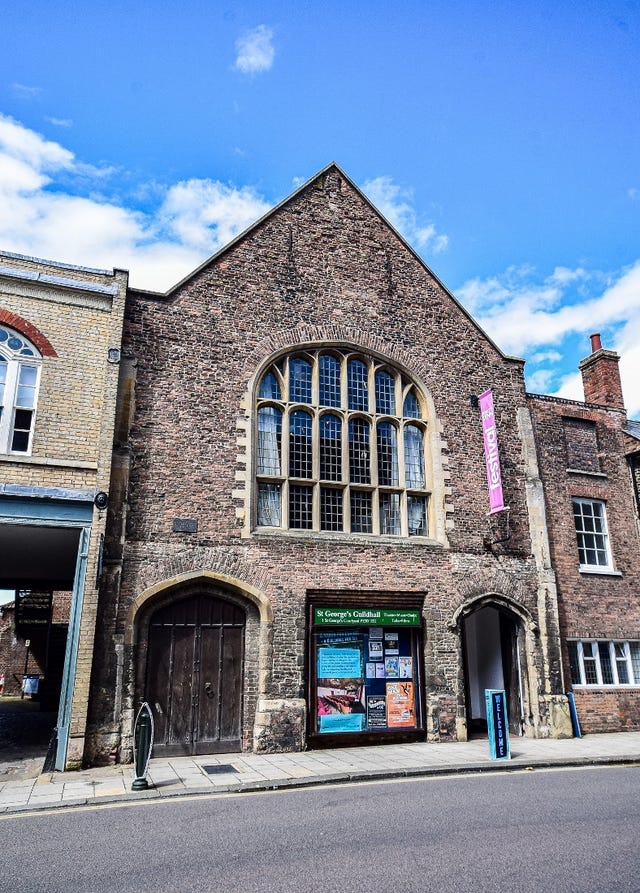Theatre exposes historic timber floor dubbed ‘dry equivalent of the Mary Rose’
St George’s Guildhall identified 15th century floorboards believed to have once been trodden by Shakespeare.

The oldest working theatre in the UK, where William Shakespeare is thought to have performed, has exposed an area of historic timber floor “larger than a tennis court” in a heritage project.
Tim FitzHigham, creative director of St George’s Guildhall in King’s Lynn, Norfolk described it as the “dry equivalent of the Mary Rose”.
The theatre identified 15th century floorboards believed to have once been trodden by Shakespeare in 2023.

The following year a doorway, that may once have led to the Bard’s dressing room, was discovered.
In February of this year, the theatre moved its performances to another building on-site in order to lift layers of the guildhall’s floor and carry out conservation work in a project expected to last until 2027.
Mr FitzHigham said the area of floor was “larger than a tennis court and it’s all 1419 beams all around you”.
“The information that’s coming out of that floor is kind of like the dry equivalent of the Mary Rose, that’s how important this discovery is,” he added.
The theatre’s first recorded performances took place in 1445, before the birth of Shakespeare – who was baptised in 1564 and died in 1616.
During 1592-1593 London’s theatres were closed because of an outbreak of plague and Shakespeare and his company of actors were on tour in King’s Lynn.
In Shakespeare’s time the venue was also used as a French school, but Mr FitzHigham said by the 1740s there was a fixed stage arrangement there, which he said was the earliest of its kind in the country.
“Having the whole floor exposed gives us a massive amount of information about the use of the venue over the last 600 years,” he said.

There was evidence of early playgoers eating nuts, oysters and chicken, drinking wine and smoking at the venue, he said, adding: “It sounds like a genuinely good night out.”
“We’ve literally found the food, we found all this stuff down the cracks of the floorboards,” Mr FitzHigham said.
“We’ve got loads of nutshells, oyster shells, bits of pipe, broken wine bottles and chicken bones.
“We’re now able because we’ve got this huge area exposed to see all this stuff.
“It’s a very exciting window onto what was probably a really rowdy theatre hundreds of years ago.”
He said that the raised stage from the 1740s had a “distinct square” sawn in the floor and suggested it was the Georgians highlighting where they believed Shakespeare had performed more than a century before.
“The Georgians have chosen to raise up the boards on which it’s very probable that they believe Shakespeare performed,” he said.
“So they’re trying to make the link between Shakespeare and this venue all the way back in 1740.”
Mr FitzHigham said that for a “very limited period”, from May 26 until the end of July, people will be able to view the exposed stage before the next phase of the regeneration project.
Angus Wainwright, National Trust archaeologist, said: “The fact that traces of 600 years of theatre in the centre of King’s Lynn survive is particularly amazing.”





